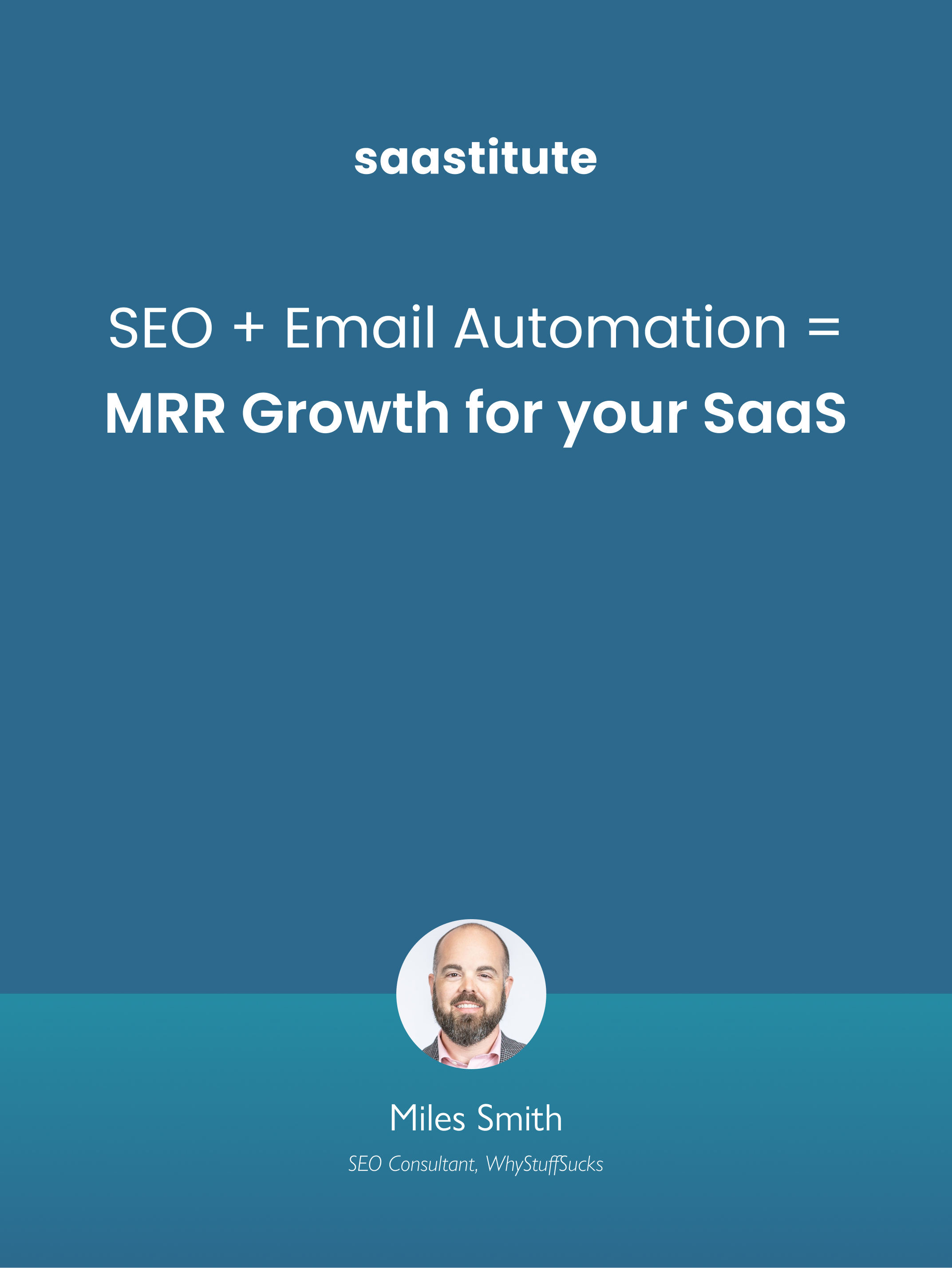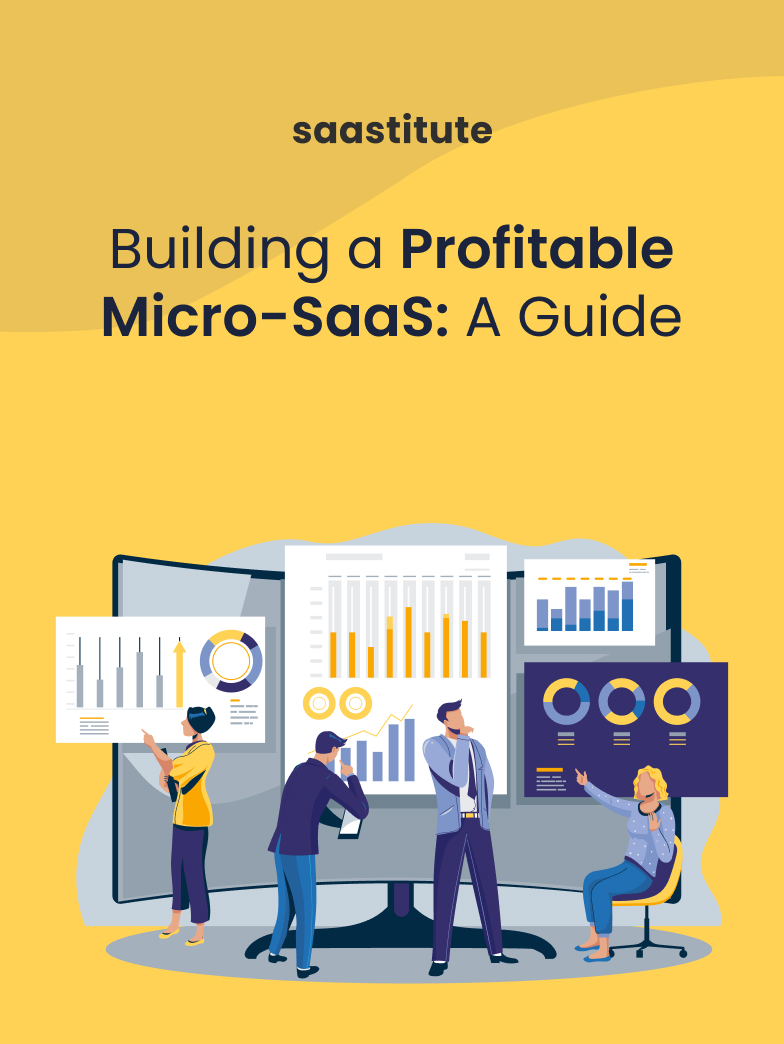What is Vertical SaaS and Why It's The Future of SaaS?
With the rising pace of growth in the SaaS industry, here’s how Vertical SaaS targets a niche market to cater for the needs of a single industry
.png)
When SaaS first came about in the 1960s, it catered to just one purpose: to input commands into the terminal and have them executed, which saved a lot of time back in the day. Through the evolution of technology, more industries demanded a specific product to cater for their needs. This is where vertical SaaS took over the market. In this article, we will take a look at what Vertical SaaS is, how it is different from Horizontal SaaS, its benefits, and the challenges it poses -
What is Vertical SaaS?
SaaS distribution models can be categorized into two primary types: Horizontal SaaS and Vertical SaaS.
Vertical SaaS is interested in creating software solutions that are niche-specific. For example, industries such as healthcare or food service need a product to take care of their specific needs such as a patient appointment scheduler or a hotel table management software. Vertical SaaS companies zero in on this specific need and develop a product to fulfil that need of that specific industry. An example of a vertical SaaS is Riskalyze, a financial service provider in the United States.
Vertical SaaS is a distribution model that is developed to cater for the needs of a specific industry or a company.
Vertical SaaS solutions are built by industry experts who have years of insights into industry specific problems and how to solve them. A lot of these products, such as the Health Assurance Plan were first developed as an in-house solution to improve services. Soon after its launch the company realized that it could be used to solve the same problems for other dental facilities, and it became a vertical SaaS product.
Even though vertical SaaS hasn’t been around for very long, it has seen tremendous success. Veeva, a cloud-based CRM and content management solutions provider to the life science industry, went from zero to $2.4 billion in less than six years, with initial funding of only $10 million.
Vertical SaaS vs Horizontal SaaS
Unlike Vertical SaaS, Horizontal SaaS is a distribution model where a SaaS product caters for the needs of a wide range of industries. The simplest example would be Slack, a company-wide communication application targeted at small and medium-sized firms. While Slack has not had much to do outside intra-company communication, it does not keep itself limited to any industry. Slack can be used by any company, irrespective of the industry.
Horizontal SaaS has been around for much longer than Vertical SaaS, is a more expansive market, and harder to saturate. However, owing to how long it has been around, major horizontal markets already have established players with immense authority and customer loyalty. Due to this, new players can find it hard to venture into these markets.
On the other hand, Vertical SaaS is fairly new and has one primary advantage- it recognized industry specific challenges and problems and offers solutions that horizontal SaaS products can't.
Benefits of Vertical SaaS
Vertical SaaS has grown massively in the past decade and as many industries are shifting to the digital space, it shows no sign of slowing down. Here are some of the benefits of vertical SaaS:
1. Better integrations
Since vertical SaaS provides a tight-knit product, the company has full control to build and implement native integrations into the product. In this way, Vertical SaaS is able to offer industry specific integrations that don't make it to the list of Horizontal SaaS integrations. The company can also develop newer integrations based on the user's needs since they target a narrow sliver of the industry.
2. Higher returns on investment
As the products are targeting a smaller group of the market, companies usually conduct surveys and research before their development process begins. This makes it easier to locate smaller business processes and solve for them. This clear perspective of the target market and a tailored product provides more conversions with less resources thus guaranteeing higher returns on your investment.
3. Lower customer acquisition cost
Being industry-specific makes it easier for the company to gain perspective on the industry’s needs and narrow down on the leads. A smaller, more reliable lead pool, ensures that your business spends less on marketing and chasing leads. This coupled with the fact that word of mouth works better in niche industries, means that Vertical SaaS also increases chances of personal referrals and reduces the customer acquisition cost.
4. Head start over competitors
Since vertical SaaS is fairly new, very few industries have explored industry specific solutions. Unlike horizontal SaaS, which is a more mature market, launching into Vertical SaaS at this point in time gives you a head start over other competitors. Vertical SaaS companies also work closely with industry experts and gain valuable knowledge about the industry’s needs and inner workings. Products can be designed with future changes in mind as there’s only so much an industry can change in a given time.
5. Upgrades and Scalability
With a vertical SaaS solution, businesses have a better understanding of the industry cycle. Thus, infrastructure is automatically scaled to accommodate up and down cycles without wasting important resources on tracking, monitoring, and support. It also ensures frequent software updates with seamless improvements, allowing for continual, rapid innovation.
Also read: Top 7 SaaS Trends to Keep Up With in 2021
Challenges of Vertical SaaS
No business model is without challenges and vertical SaaS is nothing special. Though vertical SaaS enjoys some benefits over horizontal SaaS, its challenges posed also are unique to itself.
1. Smaller lead pool
Targeting a niche industry is a viable option in terms of conversions but mainstream industries outnumber the smaller industries exponentially. This adversely affects the company as there are only limited amounts of leads in a small industry.
2. Resisting change
There’s a good chance that a prospective lead is already using a widespread horizontal SaaS for their business solution. Convincing them to switch to a vertical SaaS could be challenging as it simply does not offer the features that the larger companies and their products could. They could also see the switch as a downgrade from their current product.
What does the future hold for Vertical SaaS?
It might seem like companies with a horizontal SaaS model have the upper hand as their products aren’t limited to a single industry or company. Since they have a better chance of being exposed to a higher percentage of the market, they might have what it takes to make it big. But this poses the factor of competition.
Every major application you can think of has a cheaper or even free alternative. A lot of artists prefer to use Inkscape over Adobe Illustrator as it is free, open-source and not as heavy on your operating system.
On the other hand, Vertical SaaS is a fairly new market. Not many industries have explored niche-specific solutions, and the benefits of vertical SaaS are something Horizontal SaaS doesn't offer. The comparison, however, is not as easy as that. As small as an industry might seem for a vertical SaaS product, it is usually hard or sometimes near impossible to find a perfect replacement for the mainstream product without sacrificing some of the features and functionality of the horizontal SaaS products. Regardless of these challenges, the Vertical SaaS industry seems to be on the rise -

One of the hardest times for business to survive and thrive was during the 2020 worldwide COVID-19 pandemic. A lot of businesses were shut down and employees were laid off by the hundreds. While everyone had to work from the comfort of their homes, this gave rise to the need of cloud based SaaS solutions. Zoom was one of the companies that was introduced to many of us and stayed as a part of our office life for quite sometime.
According to a study conducted by Fractal Software, a vertical SaaS enthusiast, the market cap of the Fractal Vertical SaaS Index increased from $178.9 billion in March 2020 to $441.4 billion by the end of Q3 2021, a 146.7% increase in about 18 months. $52.5 billion of the increase was the addition of 5 new public SaaS companies and the remaining $262.5 billion was from the existing companies appreciation. Though it took a slight dip in 2020, it quickly shot up to monumental figures. This shows just how undeterred the vertical SaaS market was, even during the pandemic.
To wrap it up...
Though horizontal SaaS is a mature market as they have a deeper hand in things, vertical SaaS shows no sign of slowing down. They’re offering specific solutions to a growing market and to the customer, who are aware of the benefits that come with a SaaS solution, which can be a killer combo when paired up with a Product Led Growth business strategy.














.svg)


